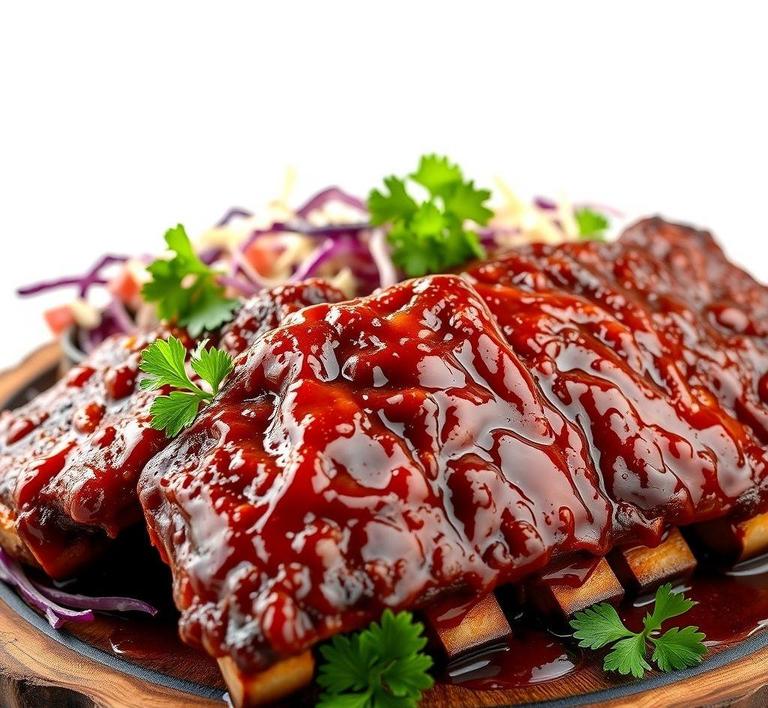Refreezing pork spare ribs can be a bit tricky, but with the right knowledge, it’s totally doable without sacrificing flavor or safety. Whether you’ve cooked a batch and have leftovers, or bought too many ribs for your meal plans, understanding how to properly refreeze them is key. If done the right way, you can keep those tasty ribs fresh for future meals. In this guide, we’ll walk you through the best methods to refreeze pork spare ribs, ensuring that they remain juicy, tender, and safe to eat down the road. From freezing before or after cooking to thawing, we’ve got all the details covered so you can enjoy your spare ribs just as much the second time around!
Can You Refreeze Pork Spare Ribs?

Yes, you can refreeze pork spare ribs-but only under specific conditions. The key determinant lies in whether the ribs were thawed safely the first time. If the ribs were defrosted in the refrigerator (at or below 40°F / 4°C), then refreezing them is generally safe. However, if they were thawed on the countertop, in warm water, or by using the microwave, refreezing becomes unsafe due to the rapid bacterial growth that can occur at temperatures above refrigeration level.
The USDA confirms that meat thawed in the fridge can be refrozen without cooking, although there may be a compromise in texture and moisture retention. This safe refreezing guideline is rooted in the science of microbial behavior-most harmful bacteria begin multiplying rapidly between 40°F and 140°F, a range known as the "danger zone."
It’s also important to consider whether the ribs have been previously cooked. Cooked pork ribs that have been properly handled and cooled can be safely frozen again, provided they haven’t lingered in unsafe temperature zones for over two hours (or one hour if room temperature exceeds 90°F / 32°C).
How To Refreeze Pork Spare Ribs?
Refreezing pork spare ribs correctly is all about meticulous handling and packaging to preserve quality and safety. Here’s a step-by-step guide:
-
Assess the Condition:
- If raw or cooked pork spare ribs have been stored in the refrigerator and have not exceeded the 3-4 day storage recommendation, they can be refrozen.
- Check for any off odors, discoloration, or slimy texture. If any of these are present, discard the ribs.
-
Portion Appropriately:
- Divide the ribs into meal-size portions. This makes it easier to thaw only what you need later, minimizing repeated thawing and refreezing cycles.
-
Wrap and Seal:
- Use heavy-duty freezer bags or vacuum-sealed packaging to prevent freezer burn. Wrap the ribs tightly in plastic wrap or aluminum foil before placing them in a freezer bag to offer double protection.
- Remove as much air as possible from the packaging, as exposure to oxygen accelerates freezer burn and flavor degradation.
-
Label and Date:
- Clearly label the package with the refreezing date and contents. Pork ribs can be safely stored in the freezer for up to 4-6 months for best quality, although they remain safe indefinitely at 0°F (-18°C) if continuously frozen.
-
Use a Deep Freeze if Possible:
- A deep freezer maintains more consistent cold temperatures than a standard fridge-freezer combination, offering better preservation.
Quality Impact
While refreezing pork spare ribs is safe under the right conditions, it does come with trade-offs-especially concerning texture, flavor, and juiciness. Each freeze-thaw cycle creates ice crystals within the meat fibers. When thawed, these crystals rupture cell walls, causing moisture loss and resulting in a drier, potentially tougher final product.
For raw ribs, this means that upon cooking, the meat may not be as succulent or tender as if it had been cooked after the first thaw. Cooked ribs are slightly more forgiving, but even then, reheating can further dry them out. Marinades and moisture-locking cooking techniques-like braising or slow-cooking-can help compensate for these losses.
Freezer burn, another common quality issue, occurs when air reaches the surface of the meat, leading to dehydration and oxidation. While it doesn’t make the ribs unsafe to eat, it can cause unpleasant textures and a stale, cardboard-like flavor. Proper wrapping and minimizing time in the freezer can greatly reduce this risk.
Refreezing pork spare ribs is a practice that walks a fine line between convenience and culinary compromise. Done properly-with attention to safe thawing methods, correct storage practices, and airtight sealing-it’s a viable way to reduce waste and manage your meal prep effectively. However, the process does impact the quality of the meat, particularly in terms of texture and moisture.
To mitigate these effects, consider using refrozen ribs in dishes that benefit from moist cooking methods or bold flavor additions. And remember: always err on the side of caution when it comes to food safety. If you’re ever uncertain about how long the ribs have been thawed or the conditions they were kept in, it’s best not to refreeze them. Safe meat handling is the cornerstone of not only great meals but also great health.
Is It Safe To Refreeze Pork Spare Ribs?
Refreezing pork spare ribs can be done safely-under the right circumstances. The most crucial factor is temperature control. If the ribs were thawed properly in the refrigerator and have remained at or below 40°F (4°C), they are safe to refreeze. The USDA confirms that meat thawed in the refrigerator can be refrozen without cooking, though this might affect texture and moisture retention.
However, if the ribs were thawed at room temperature, say on the kitchen counter, or have been sitting out for more than two hours (or one hour in hot weather), refreezing becomes unsafe. This is because bacteria such as Salmonella and E. coli thrive between 40°F and 140°F-known as the “danger zone”. Refreezing in this state might not kill the bacteria and could pose a risk of foodborne illness when consumed later.
From a quality perspective, each freeze-thaw cycle damages the muscle fibers, leading to drier, tougher meat. Pork spare ribs are known for their rich marbling and connective tissue-qualities that can deteriorate if improperly handled. That said, if safety is the priority, and the ribs have been refrigerated, it is generally acceptable to refreeze them, although the eating experience may not be quite as juicy or tender as before.
Signs That Pork Spare Ribs Should Not Be Refrozen
Before deciding to refreeze, it’s imperative to assess the current state of the meat. Here are unmistakable warning signs that pork spare ribs are past their prime and should not be returned to the freezer:
-
Off-Putting Odor:
Fresh pork should have a mild, almost sweet smell. If the ribs emit a sour, ammonia-like, or rotten odor, it’s a clear indication of spoilage. Even slight changes in scent should prompt caution.
-
Discoloration:
Healthy pork ribs are typically pinkish-red. If the meat has turned a dull gray, greenish hue, or shows dark, slimy patches, it signals bacterial growth or oxidation that renders it unsafe to refreeze or consume.
-
Slimy Texture:
A tacky or slippery film on the surface of the ribs is a biological red flag. This sliminess, caused by bacterial activity, indicates spoilage and should be taken seriously.
-
Excess Moisture or Drip Loss:
If the thawed ribs are sitting in a pool of liquid, this could be a sign of cellular breakdown. While some drip loss is normal, excessive fluid may indicate that the ribs have degraded in quality or were previously frozen and thawed improperly.
Common Refreezing Mistakes
Refreezing pork spare ribs isn’t just about tossing them back into the freezer. Several common missteps can sabotage food safety and ruin texture:
-
Refreezing After Room Temperature Thawing:
Leaving pork ribs out on the counter to thaw is a major no-no. Once the meat reaches the danger zone, bacteria can multiply rapidly-even if you cook it later. Refreezing after this can lock in harmful microbes.
-
Multiple Freeze-Thaw Cycles:
Repetitive cycles weaken the meat’s structure. Not only does this drain the ribs of moisture and flavor, but it also increases the risk of contamination, especially if thawing is done improperly each time.
-
Freezing Without Airtight Packaging:
Improper wrapping allows air to seep in, leading to freezer burn-a condition where the meat becomes dehydrated and develops a grayish, tough crust. This compromises taste and texture even if the meat is still technically safe.
-
Delayed Refreezing:
If you’ve thawed ribs but left them in the fridge for several days without cooking, don’t assume it’s still okay to refreeze. Refrigerated meat should ideally be refrozen within 1-2 days of thawing to ensure safety.
Tips and Tricks for Refreezing Pork Spare Ribs Properly
-
Freeze Quickly:
The faster the ribs refreeze, the better the cellular structure is preserved. Use your freezer’s ‘fast freeze’ setting if available. Lay the ribs flat to ensure even and rapid freezing.
-
Portion Smartly:
Before freezing (or refreezing), divide the ribs into meal-size portions. This limits the need to thaw and refreeze large batches repeatedly and helps preserve quality.
-
Use a Vacuum Sealer or Heavy-Duty Wrap:
Vacuum-sealing locks out air and moisture, minimizing freezer burn. Alternatively, use two layers of protection-plastic wrap followed by aluminum foil or a freezer-safe zip-top bag.
-
Label and Date Everything:
Mark the package with the date of refreezing. This helps you track how long the ribs have been in storage. Generally, refrozen pork should be consumed within 2-3 months for best quality.
-
Cook Before Refreezing (Optional):
If you’re unsure about refreezing raw ribs, consider cooking them first. Once cooked, ribs can be safely frozen again, and the cooking process will help destroy any bacteria that may have developed during the first thaw.
Conclusion
Refreezing pork spare ribs is a practice rooted in convenience and necessity, but it’s not without its caveats. When handled with care-keeping a vigilant eye on temperature, time, and hygiene-it can be done safely with minimal impact on taste and texture. However, the margin for error is slim. Always trust your senses, err on the side of caution, and treat each freeze-thaw cycle with respect.
By understanding the signs of spoilage, avoiding common mistakes, and using smart storage methods, you can extend the life of your pork spare ribs without compromising safety or satisfaction. So the next time you find yourself with more ribs than you can cook, you’ll know exactly how to handle them-like a seasoned kitchen pro.


